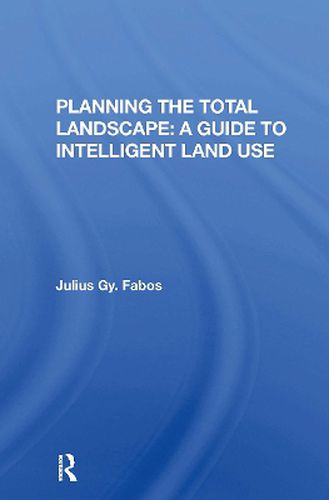Readings Newsletter
Become a Readings Member to make your shopping experience even easier.
Sign in or sign up for free!
You’re not far away from qualifying for FREE standard shipping within Australia
You’ve qualified for FREE standard shipping within Australia
The cart is loading…






Rapid changes in land use, especially in growing metropolitan areas, have created problems that increasingly indicate an urgent need for techniques and procedures for making intelligent land-use decisions. This book identifies the potential undesirable effects of land-use changes and provides techniques for estimating and minimizing them. Based on several years of research conducted by a team of thirty-four faculty and assistants, the study shows how planners and decision makers can benefit from such contemporary planning tools as remote sensing, statistical analysis, and computer technology, as well as a variety of evaluation procedures. Part 1 describes the problems of contemporary urbanization and offers a set of planning principles and tools for working with the environmental landscape. These principles and tools are the basis of the procedures detailed in Part 2; the assessment procedures, in turn, are an essential part of the two current planning approaches-the holistic, landscape approach and the parametric approach-described in Part 3.
$9.00 standard shipping within Australia
FREE standard shipping within Australia for orders over $100.00
Express & International shipping calculated at checkout
Rapid changes in land use, especially in growing metropolitan areas, have created problems that increasingly indicate an urgent need for techniques and procedures for making intelligent land-use decisions. This book identifies the potential undesirable effects of land-use changes and provides techniques for estimating and minimizing them. Based on several years of research conducted by a team of thirty-four faculty and assistants, the study shows how planners and decision makers can benefit from such contemporary planning tools as remote sensing, statistical analysis, and computer technology, as well as a variety of evaluation procedures. Part 1 describes the problems of contemporary urbanization and offers a set of planning principles and tools for working with the environmental landscape. These principles and tools are the basis of the procedures detailed in Part 2; the assessment procedures, in turn, are an essential part of the two current planning approaches-the holistic, landscape approach and the parametric approach-described in Part 3.